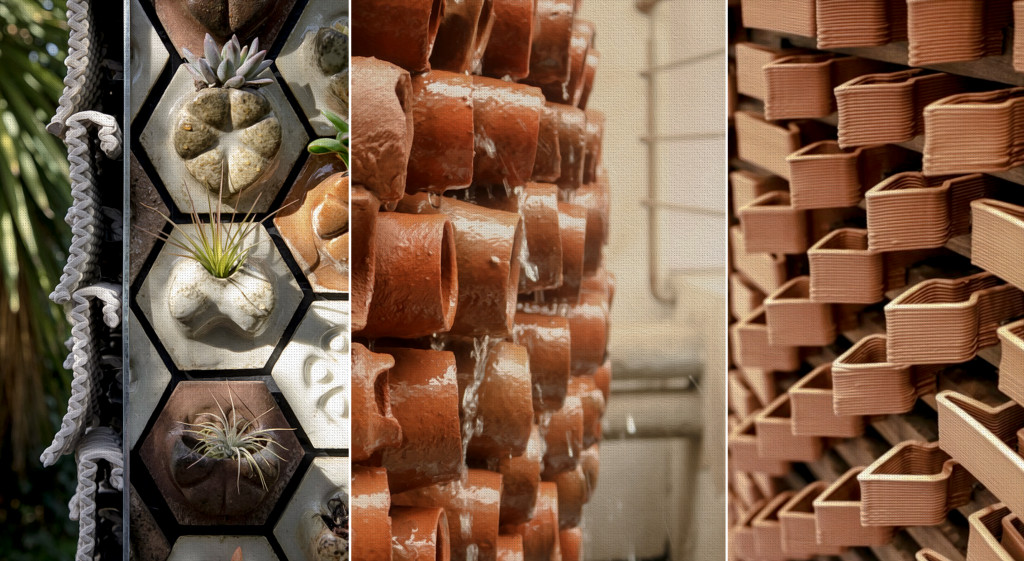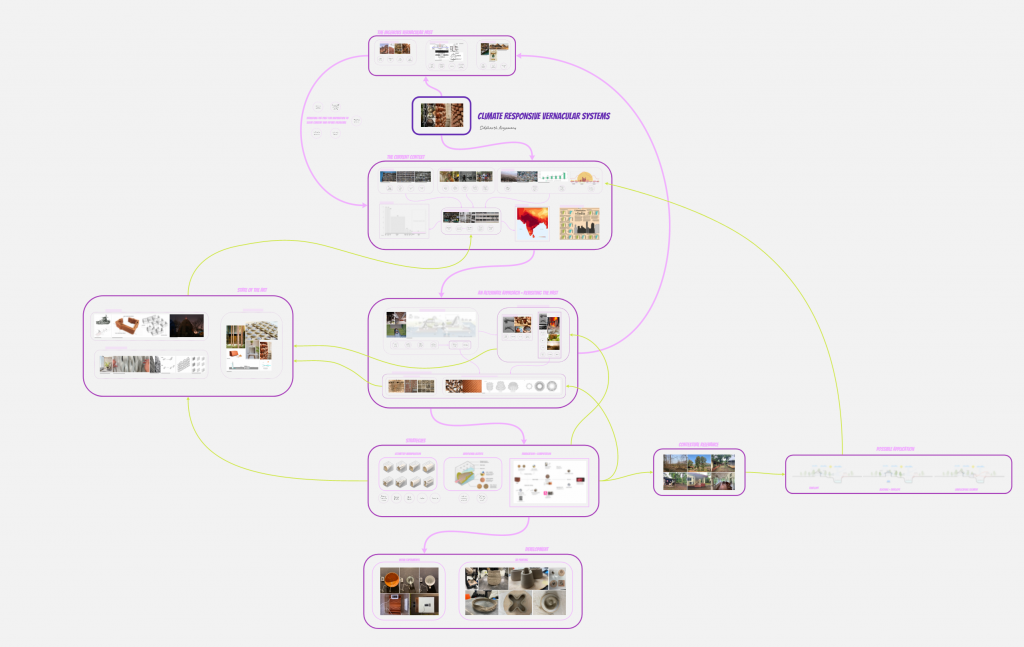
This research explores the potential of vernacular aesthetics and design strategies of ancient India. The current situation of India is composed of concrete and glass construction which does not resonate with India’s hot climate. With rising heat waves, reliance of traditional mechanical air-conditioning is increasing which in turn releases harmful emissions such as HFCs. There is a need for development for more cities due to increasing urbanization and population growth. If constructed in the same way, it would not be sustainable functionally and aesthetically as Indian cities are loosing their identity and performance. Thus it is necessary to re-visit vernacular architecture as it incorporates aesthetics and performance that is contextually and culturally relevant. This research looks into how vernacular aesthetics and design principles such as evaporative cooling can help to synthesize an aesthetically and functionally relevant building envelope language. Thus creating a new “digital vernacular” style by combining ancient principles and digital tools such as 3D printing and parametric design.
Overall Cosmogramme

The cosmogramme above describes the process undertaken to develop a digital vernacular form of design to cool structures. It involves research into past passive cooling principles such as evaporative cooling and exploration into why these principles are relevant in present context of Indian cities. It further looks into exploration of state of art projects exploring similar research involving fabrication processes, ornamentation and passive design strategies.
Part 1 : Revisiting the past

This section involves looking back and cataloging space planning, material and passive cooling principles in ancient Indian structures such as palaces and forts. It also highlights a list of strategies that can be further looked into as a possible exploration.
Part 2 : The current context

This section displays the various agents in present day India. Such as concrete and glass construction, rising heatwaves and temperatures and hence the overwhelming reliance on mechanical air – conditioning. This further emphasizes on the need to revisit the vernacular and proposal of a more sustainable alternative to cooling buildings.
Part 3 : Revisiting the past

Part 4 : Geometry exploration and design strategies

Part 5 : Contextual relevance and application

Part 6 : Experimentation and fabrication

